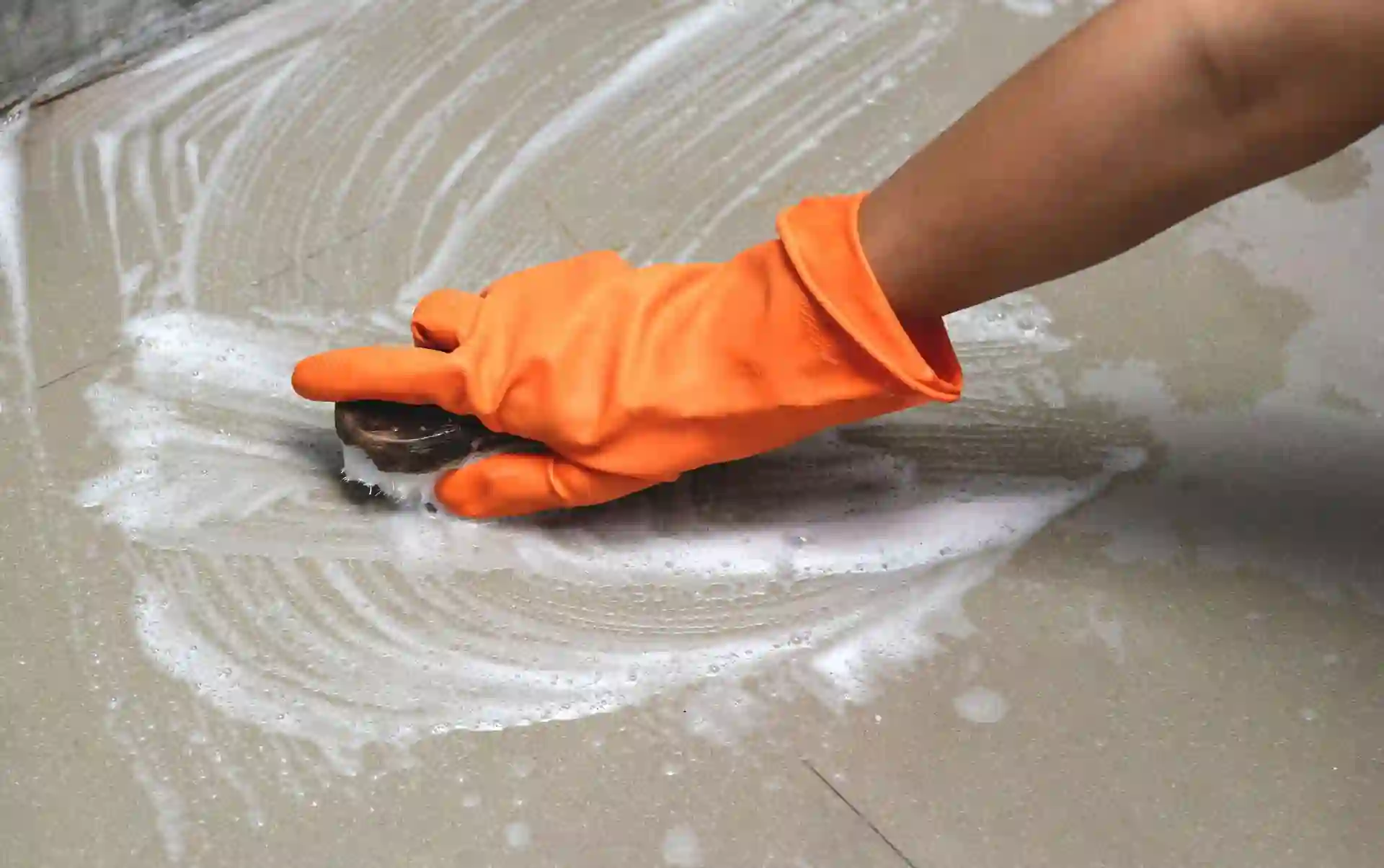Detergent stains on floors can be frustrating. They not only mark the appearance of your living space but also suggest incomplete cleaning routines. You can maintain a clean and inviting environment by understanding how these stains form and taking proactive steps to address them.
Using the right techniques tailored to your floor type is key. Each surface requires specific care for effective stain removal, whether it’s tile, hardwood, or laminate. Prevention is equally important; using appropriate amounts of detergent during cleaning can significantly reduce residue buildup.
Consider alternative solutions such as vinegar or baking soda mixtures if traditional methods don’t work. These are often gentle yet effective options for tackling stubborn residues.
Staying vigilant about proper cleaning practices will keep your floors looking their best while minimizing future issues with detergent stains.
The Common Problem of Detergent Stains on Floors

Detergent stains on floors are a problem many homeowners face. They often appear unexpectedly, leaving behind a dull or cloudy residue that disrupts the aesthetic of your space.
These stains can occur in various settings, such as spilt laundry detergent in the laundry room or an overspray during mopping with an all-purpose cleaner. The issue is particularly prevalent on hardwood, tile, and vinyl surfaces.
Not only do these marks detract from your floor’s appearance, but they can also create slippery areas that pose safety risks. What starts as a simple cleaning chore could become a hassle if not addressed promptly.
Understanding why these stains happen is key to preventing them in the future and ensuring your home stays clean and inviting for you and your guests.
Factors that Contribute to Detergent Stains
Detergent stains can be surprisingly common in households. Understanding the factors contributing to these unsightly marks can help you avoid them.
One major culprit is overusing detergent during cleaning. It’s easy to think more soap equals a better clean, but too much residue often leads to staining.
Water quality also plays a significant role. Hard water contains minerals that can interact with detergents, resulting in stubborn spots on your floor.
The type of flooring influences how detergent behaves. Porous surfaces absorb liquid easily, making it difficult for residue to evaporate completely.
Improper rinsing after mopping or washing creates an environment ripe for stains. If not adequately removed, residual cleaning agents cling to floors and dry into unsightly patches.
Step by Step Guide to Remove Detergent Stains from Floors

Removing detergent stains is more manageable than it sounds. Start by dampening a soft cloth with warm water and gently rub the stained area for hardwood floors. If needed, create a mild vinegar solution for extra cleaning power.
Mix equal parts of white vinegar and baking soda to form a paste for tile surfaces. Apply this directly onto the stain and let it sit for about 10 minutes before scrubbing with a soft brush.
Carpet stains require immediate attention. First, blot the area with cold water to lift excess detergent. Then, follow up with a mixture of dish soap and water applied sparingly—blot rather than scrub to avoid damage.
Laminate flooring can be trickier. Use only slightly damp cloths; too much moisture can warp them. A little rubbing alcohol on a clean rag often does wonders without causing harm.
Tips for Preventing Detergent Stains on Floors
Keeping your floors spotless starts with proper detergent use. Always measure the right amount of detergent according to the package instructions. Overusing it can lead to residue buildup, often the culprit behind those pesky stains.
If you frequently encounter problems, switch to a low-sudsing or no-rinse formula. These options are designed for easier cleanup and less chance of leaving marks on your flooring.
Regularly clean out mop heads and cleaning cloths, too. Dirty tools can transfer leftover detergent back onto surfaces, negating all your hard work.
Be mindful when pouring detergents or cleaners directly onto floors; instead, apply them to the cleaning tool first. This simple change minimizes splashes that could create unsightly stains later.
Alternative Solutions for Removing Detergent Stains
When faced with stubborn detergent stains, you should explore alternative solutions that work wonders. One effective method is using white vinegar. Mix equal parts of vinegar and water in a spray bottle. Apply the solution directly onto the stain and let it sit for about 10 minutes before wiping it away with a clean cloth.
Another option is baking soda. Mix baking soda with water until it’s thick but spreadable. Gently rub this paste into the stained area using a soft cloth or sponge, then rinse thoroughly.
For those who prefer natural remedies, lemon juice is also an excellent alternative. Its acidity helps break down tough residues while leaving behind a fresh scent.
If these methods don’t work, consider commercial stain removers designed for your floor type. Always follow label instructions and test any product on an inconspicuous area first.




